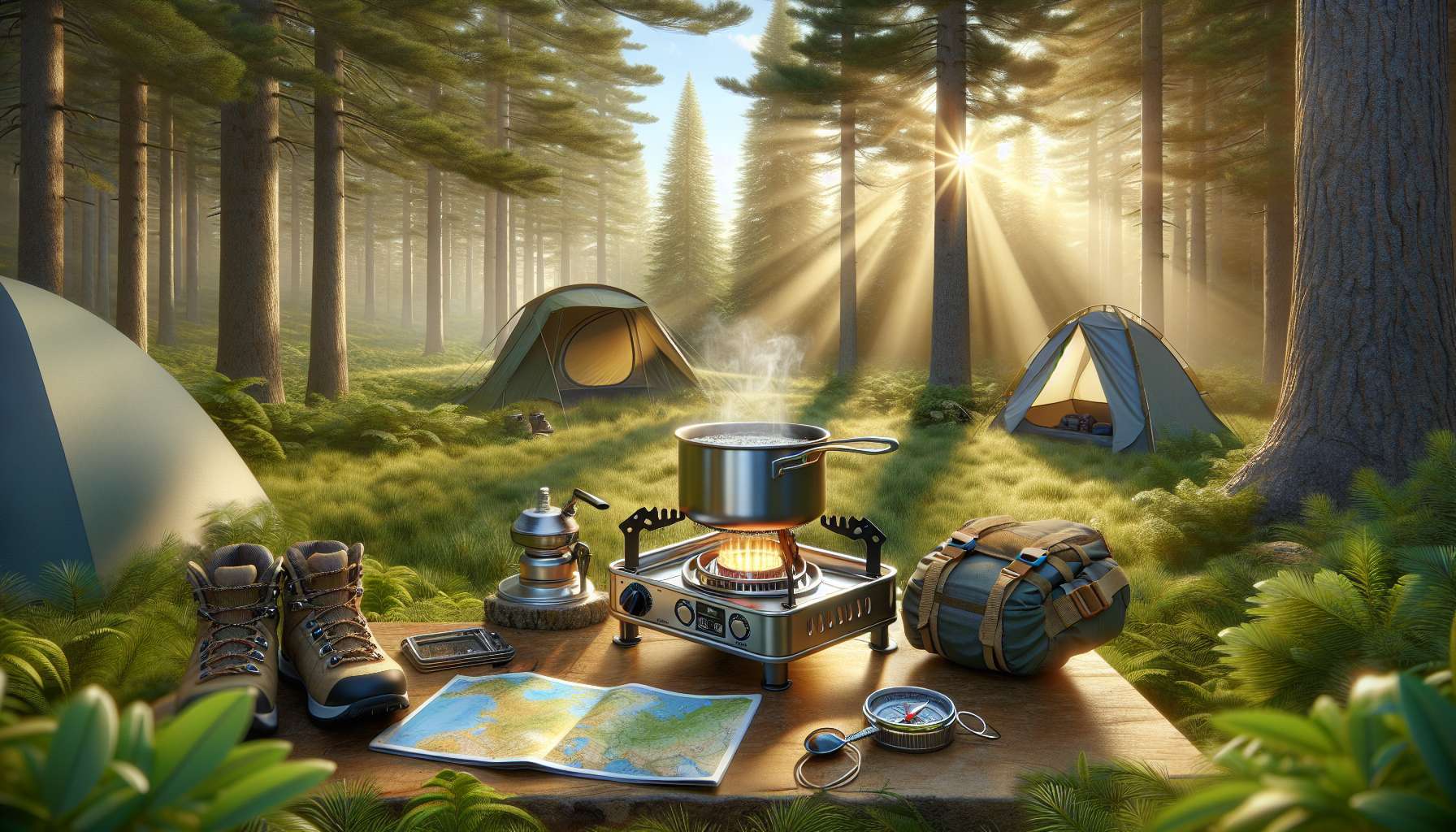Unpacking the Essentials: A Complete Guide to Mountaineering Backpacks
When it comes to conquering the great outdoors and exploring rugged terrains, having the right gear can make all the difference. Among the essential equipment for any mountaineer, a reliable and well-designed backpack stands out as a crucial companion on the journey. Mountaineering backpacks are not just bags to carry your belongings; they are specialized tools that are designed to withstand the toughest conditions and support you through the most challenging adventures.
In this comprehensive guide, we will delve into the world of mountaineering backpacks, exploring their history, design features, practical applications, and much more. Whether you are a seasoned mountaineer looking to upgrade your gear or a beginner eager to learn about the essentials, this article will provide you with all the information you need to make informed decisions and embark on your next mountain expedition with confidence.
The Evolution of Mountaineering Backpacks
Mountaineering backpacks have come a long way from their humble origins as simple bags used for carrying supplies during expeditions. In the early days of mountaineering, climbers would often rely on basic canvas or leather bags to haul their gear up the mountains. However, as the sport evolved and technology advanced, so did the design and functionality of mountaineering backpacks.
One of the key milestones in the evolution of mountaineering backpacks was the introduction of lightweight and durable materials such as nylon, Cordura, and ripstop fabrics. These materials revolutionized the way backpacks were made, making them more resistant to abrasion, tearing, and weather elements. Additionally, advancements in ergonomic design and load-carrying systems have allowed for greater comfort and efficiency in carrying heavy loads over long distances.
Today, mountaineering backpacks are equipped with a wide range of features, including padded shoulder straps, hip belts, hydration compatibility, gear loops, ice axe attachments, and more. These features are designed to enhance the performance and functionality of the backpack, making it easier for climbers to access their gear, stay hydrated, and navigate challenging terrains.
Choosing the Right Size and Capacity
One of the most important considerations when selecting a mountaineering backpack is the size and capacity. The size of the backpack you choose will depend on the length of your expedition, the amount of gear you need to carry, and your personal preferences. Mountaineering backpacks are typically categorized by volume, measured in liters, with smaller packs ranging from 20-40 liters for day trips, and larger packs exceeding 70 liters for extended expeditions.
When choosing the right size backpack, it’s important to consider the type of climbing you will be doing. For technical climbs that require a lot of gear, a larger pack with ample storage space is essential. On the other hand, for fast and light alpine climbs, a smaller, minimalist pack may be more suitable. It’s also crucial to ensure that the backpack fits comfortably and distributes weight evenly, as an ill-fitting pack can cause discomfort and strain on your back and shoulders.
Key Features to Look For
When shopping for a mountaineering backpack, there are several key features to look for that can enhance your overall experience and performance on the mountain. Some of the most important features to consider include:
1. Suspension System:
The suspension system of a backpack is crucial for comfort and load distribution. Look for packs with padded shoulder straps, adjustable hip belts, and load-lifter straps that help stabilize the pack and reduce strain on your back.
2. Gear Loops and Attachment Points:
Mountaineering backpacks often come with gear loops, daisy chains, and attachment points for securing ice axes, crampons, ropes, and other climbing gear. These features allow you to organize and access your equipment easily while on the move.
3. Hydration Compatibility:
Staying hydrated is essential during any climb, so look for backpacks that are compatible with hydration reservoirs and have easy-access hydration ports. This allows you to drink water on the go without having to stop and take off your pack.
4. Weather Resistance:
Mountaineering backpacks are exposed to a wide range of weather conditions, so it’s important to choose a pack that is made from water-resistant or waterproof materials. Look for sealed seams, water-repellent coatings, and rain covers to keep your gear dry in wet conditions.
5. Access Points:
Consider the number and location of access points on the backpack, as this can impact how easily you can reach your gear. Top-loading packs are common for mountaineering, but some packs also feature side zippers, front panels, or removable lids for added convenience.
6. Weight and Durability:
While you want a pack that is durable enough to withstand tough conditions, you also don’t want it to weigh you down. Look for lightweight materials that are strong and resilient, such as ripstop nylon or Cordura, to strike the right balance between weight and durability.
7. Ventilation and Breathability:
When carrying a heavy pack for long periods, ventilation and breathability are key to preventing sweat buildup and discomfort. Look for packs with mesh back panels, ventilated padding, and adjustable straps that allow air to circulate and keep you cool.
Expert Opinions
To gain further insights into the world of mountaineering backpacks, we turned to some experts in the field for their opinions and advice. According to renowned climber and mountaineer Alex Honnold, “Choosing the right backpack is essential for a successful climb. Look for a pack that fits well, distributes weight evenly, and has the features you need for your specific climb.”
Professional mountain guide and gear expert Melissa Arnot adds, “When selecting a mountaineering backpack, consider the terrain, weather conditions, and length of your climb. A pack that is versatile, durable, and comfortable will make all the difference in your overall experience.”
Common Misconceptions
There are several common misconceptions about mountaineering backpacks that can lead climbers to make uninformed decisions when selecting gear. One such misconception is that bigger is always better when it comes to backpack size. While having ample storage space is important, a pack that is too large can be cumbersome and difficult to manage on the mountain.
Another misconception is that all backpacks are created equal, and any pack will do for mountaineering. In reality, mountaineering backpacks are designed with specific features and functions tailored to the demands of climbing. Choosing a pack that is not suitable for the terrain or conditions can compromise your safety and comfort during the climb.
Comparative Analysis
When comparing different mountaineering backpacks, it’s important to consider a variety of factors to determine which pack best suits your needs. Some of the key aspects to compare include:
1. Price:
Mountaineering backpacks range in price from budget-friendly options to high-end, premium packs. Consider your budget and the features you need to find a pack that offers the best value for your money.
2. Brand and Reputation:
Some brands have a long-standing reputation for quality and durability in the outdoor industry. Researching the brand’s history, customer reviews, and product warranties can help you make an informed decision when choosing a backpack.
3. Weight and Capacity:
Depending on the type of climbing you will be doing, you may need a pack with a specific weight and capacity. Consider how much gear you will be carrying and the length of your expedition when selecting a pack.
4. Features and Functionality:
Look for backpacks that offer the features you need for your specific climb, such as gear loops, hydration compatibility, and weather resistance. Consider how these features will enhance your overall experience and performance on the mountain.
FAQs
1. What is the difference between a mountaineering backpack and a regular backpack?
A mountaineering backpack is specially designed for the demands of climbing, with features such as gear loops, hydration compatibility, and weather resistance that are not typically found in regular backpacks. These packs are built to withstand tough conditions and carry heavy loads over rugged terrain.
2. How do I ensure my mountaineering backpack fits correctly?
To ensure a proper fit, adjust the shoulder straps, hip belt, and load-lifter straps to distribute weight evenly and prevent strain on your back. The pack should sit comfortably on your hips and shoulders, with the weight centered and close to your body for stability and balance.
To Wrap Things Up
Mountaineering backpacks are more than just bags; they are essential tools that can make or break your climbing experience. By understanding the key features, considerations, and misconceptions surrounding mountaineering backpacks, you can make informed decisions when selecting the right pack for your next adventure. Whether you are embarking on a technical climb or a fast alpine ascent, choosing a pack that is comfortable, durable, and functional will set you up for success on the mountain.
Remember, the right backpack is not just a piece of gearit’s a trusted companion that will support you through the challenges and triumphs of your mountaineering journey. So, choose wisely, pack smartly, and set off on your next adventure with confidence and enthusiasm. The mountains are calling, and with the right backpack by your side, there’s no peak too high to conquer.




